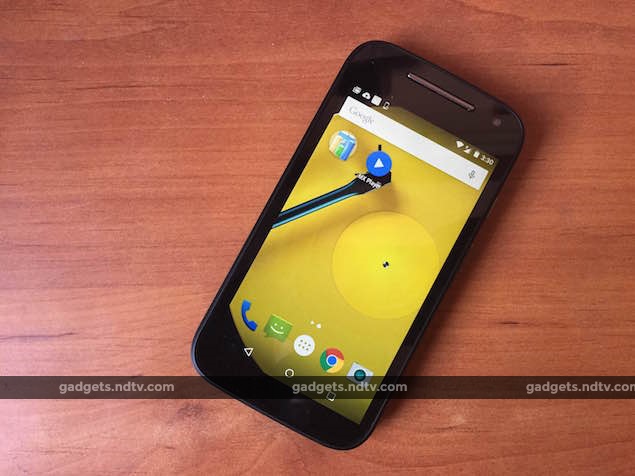Moto E (Gen 2) 4G competes with Lenovo A6000 Plus, Yu Yuphoria and Xiaomi Redmi 2, all of which have support for connecting to LTE networks. Read on to know how this Motorola handset performs in this segment.
![]()
Look and design
The phone looks similar to the Moto E (Gen 2) and we still think it is one of the best looking smartphones in its price range. The recently launched Yu Yuphoria has a metal build but the Moto E (Gen 2) 4G has a very unique design. The design and screen of the phone is similar to its 3G version.
![]()
Specifications and software
There is a lot of difference in this category. The Moto E (Gen 2) 4G has a 1.2GHz quad-core Qualcomm Snapdragon 410 SoC with Adreno 306 graphics. This is more powerful than the quad-core Snapdragon 200 used in the non-LTE variant. The Moto E (Gen 2) 4G has 1GB of RAM. Its internal storage is 8GB, which can be expanded up to 32GB via microSD card. Apart from this, the micro-USB port can also be used as a USB-OTG storage device.
![]()
One of the SIM cards of this dual SIM phone can be used to connect to 4G networks, including the 2300MHz band used in India. For connectivity, there are features like Wi-Fi 802.11 b/g/n and Bluetooth 4.0. The phone has a 5 megapixel primary camera and a VGA camera on the front for taking selfies. The phone uses a 2390mAh battery.
The Moto E (Gen 2) 4G runs a more or less vanilla version of Android 5.0.2 Lollipop and feels similar to the Moto E (Gen 2), which is a good thing.
![]()
Performance and camera
The Moto E (Gen 2) offers good performance, but the Moto E (Gen 2) 4G is faster and never stutters. Even high-end games like Asphalt 8 and Dead Trigger 2 ran smoothly, albeit at low graphics settings.
Benchmark results were also pretty good. The phone scored 22,241 and 13,925 in the AnTuTu and GFXBench tests respectively. These figures are much better than the scores of the Yu Yuphoria and Lenovo A6000 Plus, although the Moto E (Gen 2)’s qHD (540×960) display is less demanding than its competitors. In the 3DMark Ice Storm and GFXbench tests, the Moto E (Gen 2) 4G scored 5,324 and 12.4fps respectively.
![]()
The phone had no trouble playing our sample videos. The speakers produce adequate sound, but we had trouble using the earphones for long periods of time. We found the sound quality to be average during phone calls and there were frequent call drops. This is not something we would expect from a Motorola smartphone. Also, 4G connectivity was very erratic, which could be due to poor network connectivity. One thing where the Moto E (Gen 2) 4G is much better than its rivals and its predecessor is battery life. In our video loop test, the phone managed to last for 11 hours and 26 minutes.
![]()
The 5-megapixel camera on this handset performs just like the non-4G version. Overall, Motorola still hasn’t figured out how to make good cameras for affordable smartphones. The front camera is even worse.
Our verdict
There is no doubt that the Moto E (Gen 2) 4G is better than its predecessor in terms of performance as it is built with future technology in mind. However, the Lenovo A6000 Plus, Yu Yuphoria and Xiaomi Redmi 2 have 2GB of RAM and better cameras as well. Hence, all these handsets offer better value for money. But, the software experience of the Moto E (Gen 2) 4G is unmatched.
